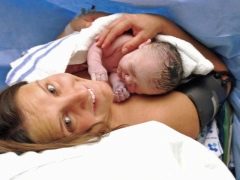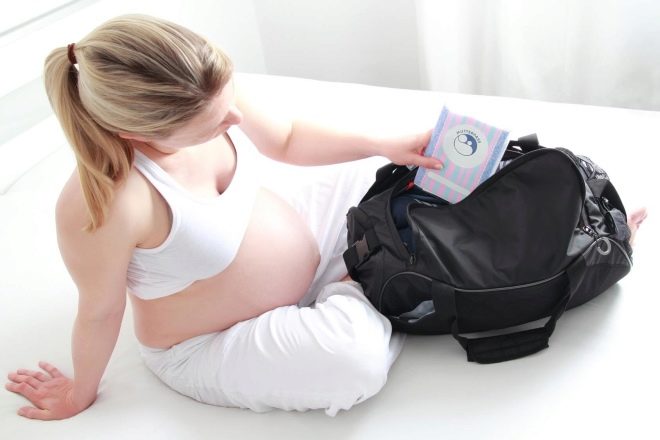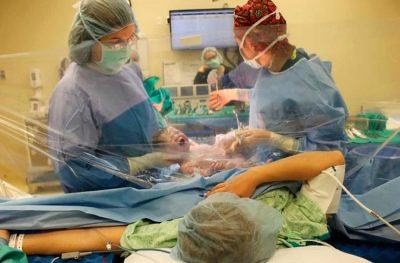Birth in the 38th week of pregnancy
The prospect of childbirth at 38 weeks of pregnancy should not be scary This period accounts for a considerable percentage of cases of birth of quite full-term and mature babies. In this article we will talk about what are the features of labor at this time, how to understand that they started and in what cases the stimulation will be carried out.
Opinion of doctors about the term
The birth of a baby on strictly the intended day of birth is a relatively rare occurrence. Most often, children prefer to be born either before the DA, or after, while for the period from 38 to 40 weeks the largest number of second and third in the account of childbirth is accounted for. The first birth can also begin at 37-38 weeks and in the full 38 weeks.
Provokes childbirth on this period a set of starting factors:
- the uterus gains enough weight, the myometrium acquires the ability to contract;
- the placenta ages and begins to produce oxytocin;
- decreases the concentration of progesterone;
- the cervix under pressure of the fetus, water, and also under the influence of a changed balance of hormonal substances in the body begins to shorten, smooth out and expand.
If childbirth begins in the full 37 weeks of gestation, they will not be considered premature, and therefore there is every reason to believe that they will pass under the classical scheme, without complications, and a quite mature, healthy and strong baby will be born.
But there is one important nuance: deliveries at full 38 weeks are considered more favorable than if the birth process starts at 37 weeks and a few days. But the first and the second usually have no significant negative consequences.
At week 38, labor can be stimulated and arbitrary. Spontaneous begin more often, the need to artificially stimulate the onset of labor in this period does not occur so often. Spontaneous labor at 37-38 and in the full 38 weeks usually begins with multiparous, as well as in women who are pregnant with twins or triplets. Such factors as polyhydramnios, large fetuses, and endocrine disorders can also affect the onset of labor.
In any case, no matter what provokes the beginning of labor activity in the current term, there is no talk about pathological births. They will pass in normal terms.
The development and condition of the baby
A child who has reached this gestation period is undoubtedly ready to be born. On average, children at 38 weeks old weigh from 3.2 kg to 4 kilograms, depending on body size, heredity, and individual characteristics. The height of the kids - about 48-50 centimeters. Large children can reach a height of 55 centimeters at 38 weeks, and small ones - only 47 centimeters with a weight of 2600 g.
Children born on the 38th week are fully formed and almost no different from those born at 40 weeks. Kids are quite plump, cheeky, from lanugo, wrinkles on the skin and original lubrication is not left a trace. Wrinkles are only on the palms and heels, but they have to be smoothed out by the second month of life.
In boys, the testicles descended into the scrotum. Children are very different - there are hairy, and there are bald, there are emotional, and there are calm and quiet. Almost all of them have a great mastery of the art of making grimaces, since the mimic muscles are well developed.
The internal organs are developed, functioning, in the lungs enough surfactant has accumulated - an active specific substance that will not allow the alveoli to "collapse" after the first independent exhalation by the lungs. In some cases (quite rarely) in this period, the lung tissue is not sufficiently developed, but resuscitators who can provide connection to the ventilator can help such children.
The basic processes of the formation of the nervous system have been completed, but the child will sharpen the nervous reactions and skills long after his birth. The baby has all the necessary reflexes for survival. The child perfectly distinguishes sounds, tastes, he has formed visual functions.
The movement becomes less, because the child becomes cramped. Nine out of ten fruits at this obstetric period are in the head presentation, optimal for the process of childbirth.
Features of the birth process
Births at this time do not have distinctive features that would depend directly on the gestational age. But still, sometimes it becomes necessary to artificially accelerate the appearance of the baby into the world. And this is not about stimulating childbirth at will. In order to choose tactics for the current term, there must be certain medical indications.
The World Health Organization - an organization whose opinion is listened to by doctors all over the world, does not advise without unnecessary need to stimulate childbirth until the full 39 weeks. The Russian Ministry of Health sets a different framework - up to 41-42 weeks about stimulation without indications, no one will speak.
They will think about artificially provoking childbirth at 38 weeks or having a cesarean section only if the condition of the pregnant woman or the child is significantly complicated, and further continuation of gestation endangers their life and health.
Such causes include cases of sudden acute hypoxia of the fetus, the onset of the decompensated stage of chronic hypoxia, Rh-conflict with the development of hemolytic disease of the fetus in the womb, mechanical hypoxia due to cord entanglement. Early birth is indicated in violation of the state of a woman, for example, due to the exacerbation of a chronic disease.
For cesarean section at this time usually there are indications in women who have multiple pregnancies, especially if pregnancy has occurred through in vitro fertilization.
In other cases, if the woman in labor comes to the hospital with contractions or discharge of water this week, it will not surprise anyone. Births will be taken according to the classical schemes and clinical protocols of the Ministry of Health, focusing on the situation.
If a woman enters with threatening childbirth, in which, as such, labor has not yet begun, she can be hospitalized in a gynecological hospital to save the pregnancy, extend it for another week, because it will be a little better for the child.
Signs of beginning
A pregnant woman at 38 weeks should be ready to go to the hospital at any moment. On the beginning of labor activity at this time speak the passage of waters and the appearance of contractions. 90% of labor begins with contractions, with the amniotic fluid being expelled - the remaining 10%.
Usually, women get used to this term to the fact that the lower back aches, pelvic bones hurt, training fights happen, and therefore they fear that they may miss the beginning of real childbirth. Skip this is impossible. The main symptom is the appearance of rhythmic, uterine contractions that recur at regular intervals.
If the water has diverted, you need to go to the maternity hospital immediately, if the contractions have begun, you can stay at home until the interval between them reaches five minutes at birth of the first child and 10 minutes at the birth of the second or third child.
Sometimes women give birth to so-called “precursors” before birth - abdominal prolapse, diarrhea, insomnia, nesting syndrome, as well as the secretion of mucus plug from the genital tract.
When is stimulation needed?
Childbirth is stimulated, if necessary, only in the hospital. If the pregnancy cannot continue in the interests of the fetus and the mother, then they give birth to activities exclusively within the walls of the maternity hospital under the vigilant supervision of doctors.
The process of stimulation is called induction. The Ministry of Health of Russia recommends induction from 41 to 42 weeks of pregnancy, but if necessary, delivery can be stimulated earlier if:
- the fetal bladder burst, the amniotic fluid began to leak, or their complete outpouring occurred);
- the condition of the pregnant woman has worsened on the background of preeclampsia, hypertension, preeclampsia;
- commenced inflammatory process of the membranes (chorioamnionitis);
- the condition of the woman has worsened due to a relapse or an acute period of any ailments;
- revealed signs of increased Rh-conflict and the development of hemolytic disease of the fetus;
- According to the results of CTG, the fetal status indicator indicates a problem (PSP = 2 or more).
Stimulation at week 38 is categorically contraindicated when the placenta and the umbilical cord are in place, if the fetus is in the wrong position in the uterus, if there are scarring on the uterus (from CS or gynecological operations), scarring on the birth canal and cervix, if the gaps in previous births were heavier third degree, with pelvic deformities and the presence of genital herpes in the acute stage.
Will not stimulate natural childbirth and in the case of unavailability and immaturity of the cervix (maturity rate less than 8 points on the Bishop scale).
Stimulation can be mechanical and medical. In the first case, cervical dilatation is forced to cause an expansion of the cervical canal with kelp or a Foley catheter. In the second case, women are given hormonal drugs (gels, pills, injections) that can cause labor pains. In the absence of effect, amniotomy is performed - puncture or rupture of the fetal membranes for the discharge of water).
If stimulation is not possible or physiological labor is dangerous for the woman and the fetus, a cesarean section is prescribed and performed.
Possible complications
Probable complications of childbirth at 38 weeks do not differ from a similar one at 39 and 40 weeks of gestation. If the birth was natural and unstimulated, the risks are basic, minor. When induction is applied, too fast labor may develop, generic weakness may develop, sometimes stimulated labor ends with an emergency CS.
Patient Reviews
According to women, birth at 38 weeks was uneventful, children were born full-term and there was no need for resuscitation services. Lactation gets better quickly - milk comes 2-3 days after the baby is born.
Read more about the development of the baby at the 38th week of pregnancy in the next video.


























